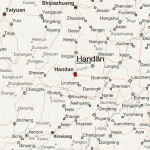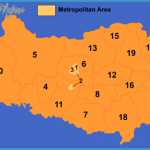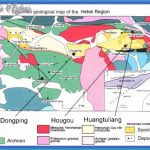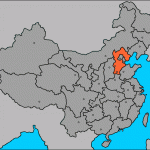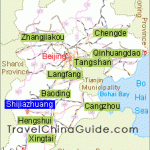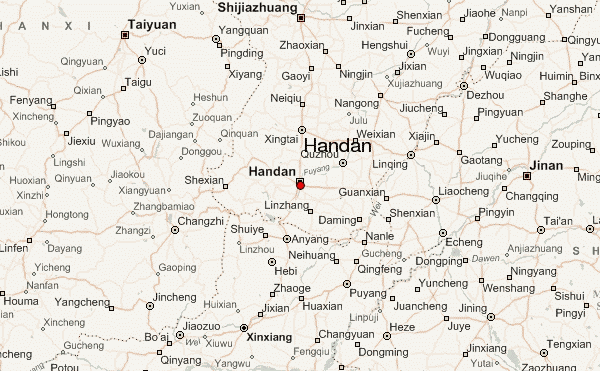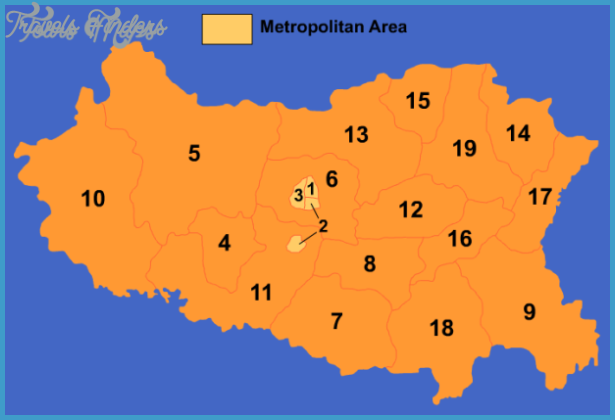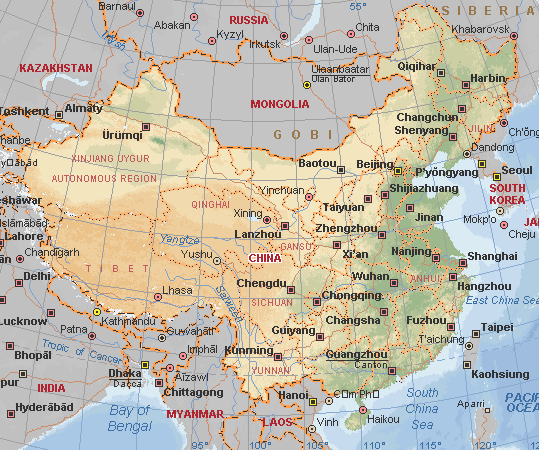Province: Hebei Altitude: 60m/197ft. Area: 420sq.km/162sq. miles Population: 800,000 (conurbation 1,800,000)
Handan lies on the eastern foothills ofthe Taihang massif, in the south of Hebei province, at 114°23’E and 36°32’N. It stretches along the west bank of a tributary ofthe Huanghe river. Handan is linked by rail with Beijing. Situation and Communications
Handan’s beginnings lie shrouded in the mists of time. There are records of it having been a rich settlement in the Spring and Autumn periods (770-476 b.c.). In the time ofthe Warring Kingdoms (476-221 b.c. it was the capital of History the Zhao kingdom from 386 to 228 b.c. and was then destroyed by the armies ofthe Qin kingdom (221-206 b.c.). During the Eastern Han era (206 b.c. to a.d. 24) Handan was rebuilt and became one of the five largest Chinese states. However, in succeeding centuries it suffered so severely from the effects of lengthy wars that by the end of the 1940s its population numbered a mere 30,000. From the 1950s onwards its fortunes revived and today it is one ofthe major industrial centres of Hebei province.
The ruins ofthe old Zhao capital lie 4km/21/2 miles south-west of the present town centre. The town was divided into three districts, eastern, western and northern. In the western section visitors can see the remains of the 284m/312yd long and 265m/290yd wide Dragon Terrace (Longtai), where the main palace is thought to have stood.
The Congtai Platform, 26m/85ft high, will be found in the north-eastern section of the site. Experts differ regarding the date of this terrace. Legend has it that it was built for King Vuling (reigned 325-299 B.C.), the ruler ofthe Zhao kingdom, and served him as a viewing platform during military exercises and also for watching singing and dancing performances.
Near the platform stands the Temple of the Seven Wise Ones, dedicated to Lin Xiangru, Lian Po and five more personalities from the time of the Warring Kingdoms (474-221 B.C.).
This temple 10km/6miles north of Handan was founded intheTang period (618-907), but the present building dates from the Ming dynasty (1368 1644). It is dedicated to Lu Weng the Immortal One (b. 798). A stone statue of him stands in the Hall of Our Ancestor Lu (Liizu Dian).
There are sixteen of these caves, which are to be found on Mount Shi-gushan some 25km/151/2 miles south-west of Handan. Seven lie in the southern foothills and nine on the west side 15km/9 miles away. The largest cave is 13-3m/44ft wide and 12-5m/41ft deep. Thefirst caves weredug inthe 6th c. and the latest during the Ming period (1368-1644). In all they contain about 3,400 statues; the Cave of a Thousand Buddhas (Qianfo Dong) alone is home to 1028 figures and many high-relief carvings.


